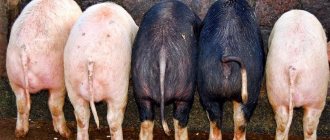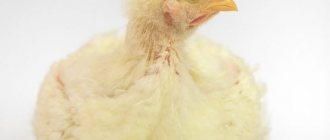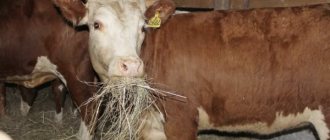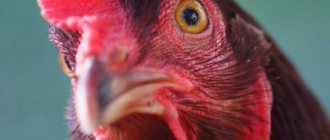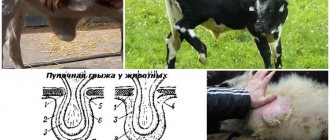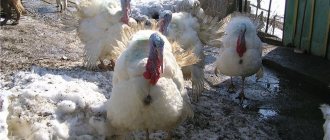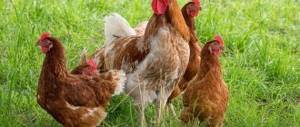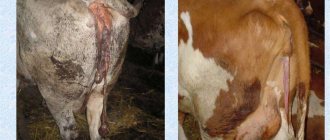The importance of keeping livestock healthy
The peculiarity of breeding pigs is that they can be raised for about a year, spending a minimum of money.
The percentage of meat content to live weight is quite high. This area of animal husbandry is one of the most popular, and the health of the livestock will ensure the production of high-quality and tasty meat. If the emerging disease in one individual is not tracked in time, the result may be infection of the entire herd and its death, which leads to large financial losses.
"Beer" ears
This is one of the simplest recipes for these offal products. The dish will delight friends at the table over a glass of cold, intoxicating drink.
For the dish you will need:
- Pig ears – 5 pcs.
- Onion – 1 pc.
- Dill and parsley - to taste.
- Sugar – 5 tsp.
- Soy sauce – 3 tbsp. l.
- Seasoning for pork.
- Pepper, salt - to taste.
The offal must be thoroughly rinsed with warm water and allowed to soak for 2 hours. Next, place the ears in a saucepan and add water until it completely covers them and cook for about 90 minutes. Then they need to be marinated and cooked.
- After 90 minutes of boiling, add spices, salt, pork seasoning, peeled onions and herbs to the broth and let simmer for another half hour.
- Next, take out the ears, place them on a baking sheet and pour soy sauce over them.
- Let it brew for 5 minutes and bake in the oven for another 10 minutes.
The dish is ready, all that remains is to cut the ears into small stitches and serve. Ears are delicious, both hot and cold.
How to determine if an animal is sick
If you suspect a disease in an animal, pay attention to the following criteria:
- lethargy - the animal becomes drowsy, looks depressed, or, on the contrary, may show anxiety;
- dermatitis - the appearance of scratching lesions on the skin;
- appetite - in an unhealthy animal it decreases or is absent altogether;
- temperature - it can either increase or, conversely, be below normal;
- coordination - disruption of normal motor activity;
- stomach - bloating often occurs;
- convulsions - possible convulsive twitching of the limbs or the occurrence of paralysis.
Classification of diseases
Among emerging diseases, there are two large groups - infectious and non-infectious.
Infectious
- Plague
A very dangerous and contagious disease. Characterized by an increase in temperature (up to 42 degrees). The animal stops eating and drinks greedily, lies almost constantly, and if it gets up, its gait becomes unsteady. After a short period of time (about a week), pinpoint hemorrhages appear on the body and ears. After about a week and a half, the animal most often dies. In isolated cases, pigs are nursed using antiviral and anti-inflammatory drugs. Sick livestock are almost always subject to slaughter.For prevention, the farm is regularly disinfected and deratized. When symptoms appear, the farm is immediately quarantined. Disposal of corpses takes place in a special technical way.
- Erysipelas
It has a lot of other names such as Breaker's erythema, creeping erythema or rubella of naturalists. The main causative agent is the erysipelas bacterium. The disease most often occurs in animals aged 3 to 12 months. Signs of the disease are as follows: fever, weakness in the hind limbs, constipation, conjunctivitis, cyanosis of the skin, congestion in the lungs. The subacute period involves the development of skin exanthema, and the chronic stage is accompanied by severe emaciation, skin necrosis and arthritis.For treatment, drugs of the penicillin group and specially developed serums are used. Preventive measures include administering a vaccine and strengthening the immune system. For humans, this disease is very contagious, therefore, when a sick individual appears, it is necessary to conduct an analysis and, if confirmed, slaughter and dispose of it, observing safety measures.
- Vesicular exanthema
Vesicular inflammation appears throughout the body. Infection occurs through contaminated food or contact with a sick animal. The temperature rises, bubbly wounds appear on the skin, in the area of the snout and ears, which subsequently burst, then the body becomes covered with a yellowish crust. If treatment is not carried out, the animal begins to move poorly and then loses the hoof horn. Females bear dead offspring.For treatment, antibiotics are chosen and the animal is put on a special diet with a predominance of liquid food. If clinical manifestations are severe, the individuals are destroyed, but the meat is suitable for consumption after careful processing. Prevention involves compliance with sanitary standards, regular examinations of animals by a veterinarian and a balanced diet.
- Gastroenteritis
Penetration of the virus into the body leads to gastrointestinal disorders and severe dehydration. Piglets most often die, and adult animals, having been ill, can pass on resistance to this disease to their offspring. When infected, diarrhea, thirst, and fever appear; for the most part, recovery occurs quickly. For treatment, antimicrobial medications are used and physiotherapeutic procedures are performed.Prevention involves providing competent care for piglets and creating comfortable conditions.
- Dysentery
When infected with an anaerobic spirochete, the animal becomes depressed, fever, diarrhea and alternating with constipation begin, feces may contain pus and blood clots. In advanced stages, the animal is destroyed because the manifestation reaches the muscle fibers.Treatment and prevention require the use of antibacterial drugs with an active ingredient such as sulfonamide.
- Aujeszky's disease (pseudorabies or infectious bulbar palsy).
The main causative agent is the herpes virus, which is almost always transmitted through rodents. Piglets adopt a sitting dog pose, become lazy and immobile, the neck becomes bent, an inadequate reaction to light appears, and pulmonary edema develops. After a couple of days, the animal most often dies.If such symptoms are detected, the sick livestock is quarantined and given protein supplements to strengthen the overall reactivity of the body. Penicillin medications and vitamin complexes are used.
Vaccination is used for prevention, and animals that have been ill are fattened for slaughter.
- Edema disease
The cause of the disease is hemolytic Escherichia coli. In the process, paresis and paralysis appear, the eyelids swell, vomiting begins, the limbs turn blue, the animal breathes heavily and its voice becomes hoarse, even barking.To speed up recovery, antibiotics and antibacterial medications are used, and then acidophilus mixtures are given.
Prevention involves regular supplementation with vitamins. Slaughter carcasses are subject to mandatory analysis and further disposal.
Non-infectious
- Parasites
These include not only helminths, but also harmful arthropods (ticks). The occurrence of demodicosis after penetration under the skin leads to a terrible condition of the skin; open wounds appear, which greatly bother the animal. In this case, be sure to call a doctor and conduct a visual examination of the animals. Then, after prescribing antimicrobial drugs, the animals are regularly treated and the pigsty is disinfected.Worms lead to the appearance of trichinosis and cysticercosis. Both types of parasites are dangerous for people, so when keeping animals it is necessary to clearly monitor the condition and quickly respond to the appearance of symptoms. Muscle fibers are damaged, the central nervous system suffers, and swelling appears. In this case, it is also necessary to consult a doctor who will prescribe the correct treatment and tell you how to carry out anthelmintic prophylaxis.
Non-communicable diseases and respiratory diseases also occur in pigs. This group includes dysbiosis, poisoning, and various types of dehydration. Their treatment does not require special knowledge - it is necessary to monitor the quality of food and prevent stale feed and products from entering the diet.
Disturbances in the respiratory tract are most often the result of very small feed and its dryness. Dust from food enters the lungs and creates irritation. Subsequently, bronchial pneumonia develops.
Diseases of small piglets are isolated separately. With a lack of vitamins and a poor nutritional diet, anemia, rickets, vitamin deficiency, hypoglycemia, and various forms of swelling can occur - animals become lethargic, eat poorly, and movements cause discomfort and pain.
Each owner, in order to obtain a healthy generation and good growth of meat breeds, is obliged to vaccinate, include vitamin complexes in the diet and monitor the composition of feed mixtures; at the first symptoms, try to isolate the individual and monitor its condition, carrying out the necessary treatment. It is also important to invite a veterinarian and follow his recommendations.
Swine flu - danger to humans and precautions
This disease is considered the most common among young piglets. Babies under three weeks of age are most susceptible to it. The peak incidence occurs in the autumn. Weak immunity and stress due to separation from mother do not allow one to normally experience cold weather.
Among the manifestations: fever, depressed emotional state, refusal to eat, redness of the eyes and blueness of the tip of the tail, ears, passivity in behavior.
As a rule, the disease does not manifest itself immediately; the general condition may return to normal for a while, but then complications appear - pneumonia, sinusitis and other symptoms. An infected piglet can die quickly.
The disease is transmitted not only by airborne droplets, but also through feed, manure, through untreated equipment and items in the pigsty, even from the breeder or maintenance personnel. For most individuals, this is not a fatal disease and can be treated with complex therapy with antibiotics and immune drugs. Sick animals are quarantined and their condition is monitored.
As a warning, each owner is obliged to keep the barn clean and monitor the correct diet of the animals, follow the rules of care and avoid hypothermia, stress, introduce vitamin and mineral supplements into food and create comfortable conditions for the pigs.
A person can become infected from a sick individual and suffer this disease just like an animal. The course of the disease is accompanied by high fever, difficulty breathing, weakness, various inflammatory processes, increased levels of leukocytes in the blood, vomiting and diarrhea. Unfortunately, death is possible if the regimen is not followed and there is no treatment. For recovery, drug therapy and mandatory hospitalization of the patient are necessary.
Porcine reproductive and respiratory syndrome (PRRS)
The dangerous viral disease has a second, popular name – “blue ear”. The virus constantly mutates and has several genotypes. Penetrates into the body of pigs of all ages, at any time of the year.
It is most dangerous for pregnant pigs: it causes severe disturbances in the reproductive functions of sows, the appearance of stillborn litters or piglets with signs of deformity. The causative agent of PRRS is an RNA-containing virus that is transmitted by contact, as well as aerogenously, over long distances. The incubation period is from 4 to 35 days.
Symptoms
Initially, signs of a respiratory infection appear, with fever and discharge from the mucous membranes of the respiratory tract, blue discoloration of the ears, nose and tail. There is general lethargy and loss of appetite. The virus circulates in the blood of animals for 8 weeks, affecting blood vessels, causing swelling.
At a later stage, if there are pregnant sows in the herd, the disease can be diagnosed by premature birth, stillborn or non-viable offspring.
Be sure to read:
Pig diseases: symptoms and treatment, what to do if the animal does not eat and lies down.
The disease weakens the immune system so much that vaccination against other bacterial infections does not help. An accurate diagnosis can only be established using laboratory analysis, since the primary symptoms are similar to many diseases. Against the background of weakened immunity and metabolic disorders, PRRS is accompanied by coccal infections and non-communicable diseases.
Prevention and treatment
The virus circulates for a long time in unsanitary conditions, so the only preventive measure is favorable conditions for keeping the herd. As a preventive measure, the use of drugs that enhance immunity is recommended.
Vaccination helps to retain antibodies for no more than six months, but does not protect against infection, but only helps to smooth out the clinical picture, and this is an expensive procedure. Veterinarians recommend using Ligfol for the treatment of PRRS as a drug that increases immunomodulation and smoothes the course of the disease, but its absolute effectiveness has not been proven.
The best option is to cull animals and thoroughly disinfect the premises and equipment before importing new livestock.
Winter diseases: what can pigs get sick with during cold weather?
In winter, the livestock is susceptible to hypothermia, which most often leads to colds, which lead to a decrease in weight gain and a decrease in overall productivity. The organs of the respiratory system suffer the most; bronchitis, pneumonia, furunculosis (inflammatory processes on the skin), and various types of influenza appear.
If symptoms appear, you should call a doctor and get advice. Treatment involves taking antibiotics, adding vitamins to the diet, and possibly vaccination.
Breeders must also tidy up the general condition of the pigsty so that the animals feel comfortable and warm inside. If necessary, install additional heat sources, especially for sows. It should be dry inside; excessive dampness also has a bad effect on the livestock.
Why do pigs' ears turn blue and what should be done?
There are several diseases of pigs that cause the skin of the ears to turn bluish.
Porcine reproductive and respiratory syndrome (PRRS)
Blue spots appearing on the skin are one of the first signs of infection with the disease. Moreover, most often the syndrome affects sows. Enterovirus, which spreads in lung tissue, is the causative agent of the disease. The danger of the disease is also manifested in the fact that the offspring suffer.
Piglets experience nervousness, slight trembling of the whole body, and sometimes convulsions. The offspring is born full-term, with a normal weight, but a poorly developed sucking reflex negatively affects the further development of the babies. If laboratory tests confirm the diagnosis, animals are vaccinated.
Chlamydia
Pathogenic chlamydia bacteria affect the intestines and respiratory tract of animals. Newborn piglets are most often infected by sows. Symptoms of the disease: fever, high body temperature, convulsions, loose stools. If treatment is not started in a timely manner, the piglets die after 2-4 days. Since chlamydia is expensive to treat, sick newborns are most often slaughtered.
Dysentery
The infectious disease is characterized by intoxication and damage to the colon. Manifestations of the disease:
- blue ears;
- frequent diarrhea;
- sudden weight loss;
- lack of appetite;
- high body temperature (up to 40-41 °C).
At the first signs of illness (stool disorder, loss of appetite), animals can still be cured by injections of antibiotics and anti-dysenteric serum.
See also
Table for calculating the yield of pork meat from live weight, how to measure and calculation using the formulaRead
Aujeszky's disease
In addition to blue ears, symptoms of the disease are manifested in increased body temperature, vomiting and convulsions, decreased appetite against the background of increased excitability and severe thirst. The central nervous system of pigs is most affected by the disease. The mortality rate is 30-35%. Sick animals are most often slaughtered, since treating animals is expensive. Meat products can be used for food only after thorough heat treatment.
Salmonellosis
If animals are not properly cared for (cages are not cleaned, food dishes are washed carelessly or rarely), the likelihood of piglets becoming infected with salmonellosis increases. It must be borne in mind that newborns suffer more from the disease than adults. In addition to blue ears, piglets experience conjunctivitis, impaired respiratory function, and body temperature increases. Treatment comes down to taking the antibiotics Levomycetin and Syntomycin.
Other reasons
Sometimes the cause of blue ears can be heart failure. Since the blood vessels of the ears are poorly filled with blood, the skin takes on a bluish or whitish tint. The disease is not only congenital.
Expert opinion
Zarechny Maxim Valerievich
Agronomist with 12 years of experience. Our best country expert.
Ask a Question
Heart failure can be triggered by eating food contaminated with pesticides, poisonous mushrooms or certain metal toxins.
Useful tips from Ukorona
- Each breeder must provide the most suitable conditions for keeping piglets and pigs. The barn must have a reliable design, the roof is made without leaks, the walls are solid without freezing, the floor has special gutters for removing waste, convenient drinking bowls and feeders are installed.
- When purchasing a new livestock, animals must be kept in quarantine. Be sure to get examined by a doctor. Thus, if one of the piglets is sick, it will be possible to prevent the spread of the disease among the general herd.
- If the farm has a very large population, then it is better to switch to dry feeding. Modern feed and mixtures can fully provide everything necessary, as they contain not only important food components, but also vitamins, amino acids, and necessary elements for healthy development.
- It is important for future owners to correctly select pig breeds that will bring the greatest weight gain and will develop well. Before taking babies, it is better to familiarize yourself in advance with the peculiarities of raising them and the requirements that will subsequently ensure normal development and allow you to get excellent results.
- Diet control is also an important component in domestic and production pig production. You should not purchase feed that is too cheap - most often they are produced by unscrupulous businessmen, adding dyes, flavoring ingredients, and medications, which in the future will have a negative impact on the development and health of the pig population.
